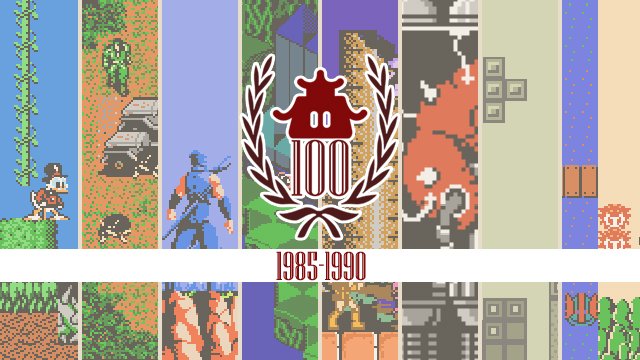
10. Zelda II: The Adventure of Link (1988)
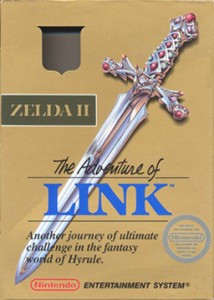
If gamers thought Super Mario Bros. 2 was a weird sequel, then Zelda II: The Adventure of Link really takes the cake. Leaving behind almost everything that made the original Zelda, well, Zelda, Zelda II opted for a more side-scrolling, platformer-RPG kind of vibe, giving Link the ability to jump, level up, and split an ironknuckle’s skull with a well-timed down-stab.
It was also his first foray into magic, laying down the foundations of magic meters to come. Granted we never heard from most of those spells again, but despite being regarded by most fans as either the worst or weakest game in the series, it’s perhaps one of the most important things Zelda II ever did. That and introduce us to the actual legend of Zelda. Cursed by a wizard in a bygone era, this Princess Zelda was sealed away in the Northern Palace and trapped in a deep sleep. To save her, Link had to find the Triforce of Courage in the Great Palace and use it to wish Zelda back awake. He’d have to endure six labyrinthine palaces as well as his own shadow to get there, but thankfully our hero in green prevailed.
Why Katharine Byrne loves Zelda II: The Adventure of Link…
Despite being the so-called “black sheep” of the Zelda series, Zelda II is one of my all-time favourite games– and not just Zelda games either; all games. Everything from the strikingly catchy music to the sublimely smooth combat lights up my heart, and I still rank taking down Link’s shadow as one of my greatest gaming achievements.
Call me crazy, but I actually prefer this one to the original Legend of Zelda. It offered a different kind of freedom to its predecessor, taking on an almost Metroid-like approach to its temples, and I loved it. I loved wandering around the map listening to the overworld theme, I loved trying to discover each town’s secrets, and I loved the feeling I got when I finally took down a temple boss with an exquisitely precise down-stab (easily the best move Link’s ever learned, by the way). It’s notoriously difficult– it makes Skyward Sword look like a walk in the park– but it still packs a punch even today, and that’s why it slices in at No.10.
9. Castlevania (1987)
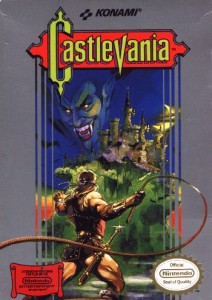
The grand-daddy of platform-horror (that’s a thing, right?), Castlevania introduced us to the legendary Belmont clan and their eternal feud with Dracula. Simon was on vampire killer duty in this game, and he had to work his way through six different levels and defeat the count’s minions of darkness before he could put the big bat to rest.
Despite being strictly linear, it had a rocking soundtrack and was perhaps one of the first games to include destructible environments (fresh wall chicken, anyone?). Dracula obviously had a fairly extensive recruitment programme going on too, as everyone from Death himself to the Gorgon and Frankenstein’s monster wanted a crack at Simon’s whip. It was a horror fan’s ultimate dream team of nasties, and they sure put up one hell of a fight too. Still considered one of the hardest NES games out there, Castlevania certainly wasn’t afraid to drive a stake right through your heart if you weren’t up to the challenge.
Why M. Noah Ward loves Castlevania…
Back before games were getting rated by the ESA, you might have requested a violent, horror-themed action game from your parents for your birthday… and actually gotten it. Such was the case for me when Castlevania came out, though as you may know, my parents were gamers too, and I doubt any of my family wouldn’t have found the Conan-meets-Dracula box art unappealing. Who needs the family friendly plumbers, mushrooms and turtles of Super Mario Bros. when the gothic thrills of Castlevania beckoned? And vampires were just as cool (okay, probably much cooler) in the ’80s as they are today, and the rogues’ gallery of monsters in Castlevania, spanning zombies, Frankenstein and Medusa, had almost everything a monster fan could look for.
Castlevania was also a beautiful 8-bit game for its time, and it featured a timeless soundtrack whose tunes are still remixed and remade by fans and Konami alike, nearly 30 years later. The story wasn’t complex, but the artistic vision and broad horror appeal fueled your imagination and reminded people, even back then, that games for all ages (yes, I’m positing Castlevania represented “mature gaming” for Nintendo fans in its time) were available on the newly-released NES.
8. Super Mario Bros. (1985)
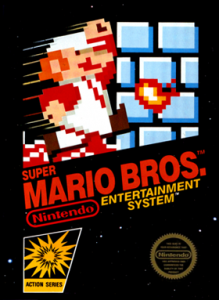
If it wasn’t for Super Mario Bros., it’s highly likely that none of us would be sitting here now. The game where the portly plumber began his illustrious career as protector of the Mushroom Kingdom (he was still cleaning out New York’s gutters in Mario Bros., remember?), Super Mario Bros. was all about one thing– stomping on goomba heads and rescuing your beloved Princess Peach from the evil Bowser (or Princess Toadstool, as she was known back then). Okay, maybe that’s two things, but who can forget the first time they threw the switch on Bowser’s drawbridge only to be told, “Sorry, Mario, your princess is in another castle!” The collective jaws of Video Game Land dropped, I tell you, dropped!
But what makes this one better than its sequel? Well, it was completely original for a start, and it birthed a whole new generation of gamers. It was simple, elegant, and most importantly, insanely fun. You never quite knew what was coming next in this strange land of koopas and piranha plants, and we owe it to this game for turning us all into the gamers we are today.
Why Kevin Knezevic loves Super Mario Bros.…
I’ll always have a special place in my heart for Super Mario Bros.. Mario’s first adventure in the Mushroom Kingdom was also my introduction to the world of video games, and it’s directly responsible for sowing the seeds of my future fanboyism. I’ll never forget unwrapping the game on my third birthday (having come bundled with my new Nintendo Entertainment System), nor will I forget the sound of the adults laughing at me as I happily switched between Mario and Luigi when one of the plumbers failed to clear a level. No game has ever instilled in me that same sense of magic as Super Mario Bros. (though few have certainly come close), and to this day it remains one of my all-time favorite adventures.
Of course, it’s not just nostalgia that makes it such an important part of video game history; even today, Super Mario Bros. stands as a paragon of game design. Running and jumping through its vast and colorful stages feels just as satisfying now as it did two decades ago, and the amount of secrets it holds beneath its blocky exterior is staggering considering it was developed in the Stone Age of the game industry. It’s certainly hard for any title as old as Super Mario Bros. to maintain its vitality (especially in the face of modern video games, which have far surpassed their humble, 8-bit origins), but with its focus on fun play mechanics and sharp level design, Mario’s first adventure has aged very gracefully (arguably better than either Link’s or Samus’), and for that it deserves to be commended.
7. Mega Man 3 (1990)
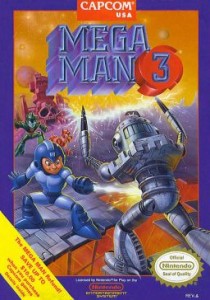
Mega Man 3 above Mega Man 2!? What kind of list is this!? Well, I hate to burst your bubble (man), but Mega Man 3 stands head and shoulders above its predecessor. For starters, it was essentially both games in one. With an equally, if not more, catchy soundtrack than the last, and even more refined graphics and top-notch level design, Mega Man 3 not only saw our blue bomber face off against eight new robot masters but all the old robot masters from Mega Man 2 as well. It was the best of both worlds, really!
But let’s not forget the other new additions that Mega Man 3 brought to the franchise as well. Perhaps the most important one was the ability to slide, giving it an undeniable stamp of coolness over its predecessor. And where would Mega Man be without Rush? Still stuck behind several un-jumpable pits, that’s where. It was also a lot more challenging than Mega Man 2 and did away with the different difficulty levels, returning to the standard set by the original. It was an improvement in every way, and that’s why it’s sitting at No.7.
Why M. Noah Ward loves Mega Man 3…
Thanks to the aforementioned, successful Mega Man 2 justifying the franchise’s existence, Capcom didn’t have any issues green-lighting Mega Man 3, which I eagerly dove into as a child. The game’s graphics were even more impressive than either of its predecessors, and greater depth was added both to Mega Man’s gameplay and world. Dr. Wily is reformed! Mega Man has an evil twin?! And now there’s a robot dog, too!
Capcom had recognized how much power-ups and upgrades meant for its hero: it wasn’t enough to collect a fresh batch of robot masters’ powers. Basically, if you were going to release an exciting platform game in the ’80s that caught the attention of kids like me (especially in a Super Mario and Zelda world), you needed more. And thus, Mega Man gained the ability to slide– a dramatic enhancement to navigating the challenging game’s traps and enemies– and his incredibly cute robot dog Rush provided additional travel and movement powers by transforming into a jumping platform, hovercraft and submarine. The screen-filling (actually larger than the screen!) robot boss near the end of the game further added to the game’s seemingly epic scope, and that’s how Mega Man 3 improved upon the incredible steps forward Mega Man 2 took, and then some.
6. Metroid (1987)
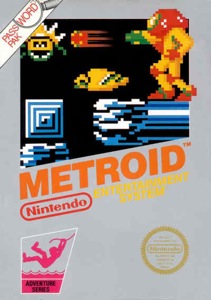
If it wasn’t for Metroid, we might never have ever realised that “going left” was actually allowed. Set on the lonely and incredibly alien planet Zebes, bounty hunter Samus Aran had to journey to the depths of Norfair, Brinstar, and Tourian to wipe out the Metroids and their creator, Mother Brain. From its eerie music to its seemingly endless maze of tunnels, Metroid was unlike anything we’d seen before. If Super Mario Bros. and The Legend of Zelda had birthed a sci-fi action love-child, then Metroid would be it.
It did away with the bog-standard level design of other contemporary games and presented players with a fully explorable world that was as bizarre and obscure as the creatures that inhabited it. It was also so huge that you had to draw out your own map so you didn’t get lost, especially if you wanted to get that mountain of power-ups available. Whether it was an unexpected missile expansion or a new suit upgrade, these were littered absolutely everywhere, encouraging players to explore every last nook and cranny Zebes had to offer, and it’s a Metroid tradition that’s endured to this day.
Why Joseph Nelson loves Metroid…
This was before my time, and I’ve only played the emulated version that came as unlockable content in Metroid Prime, but the classic Metroid still sits comfortably as one of my favourite games. At first, the general feeling of isolation and aimlessness was annoying; only through perseverance did I become enthralled by this game. The wait was worth it. This gem somehow manages to draw the player in deep, without the things we take for granted nowadays, such as in-game text and cut scenes. This had none of these, and yet with something as simple as a few words rolling over the screen if you leave the start menu up for a while, you know all you need to know– you are Samus Aran, and you must save the galaxy, at all costs. Oh, and you’re a girl– I heard that was a big deal back in the 1980s.




 ShareThis
ShareThis






